5 Essential Tips for Raising a Happy Maltese Dog
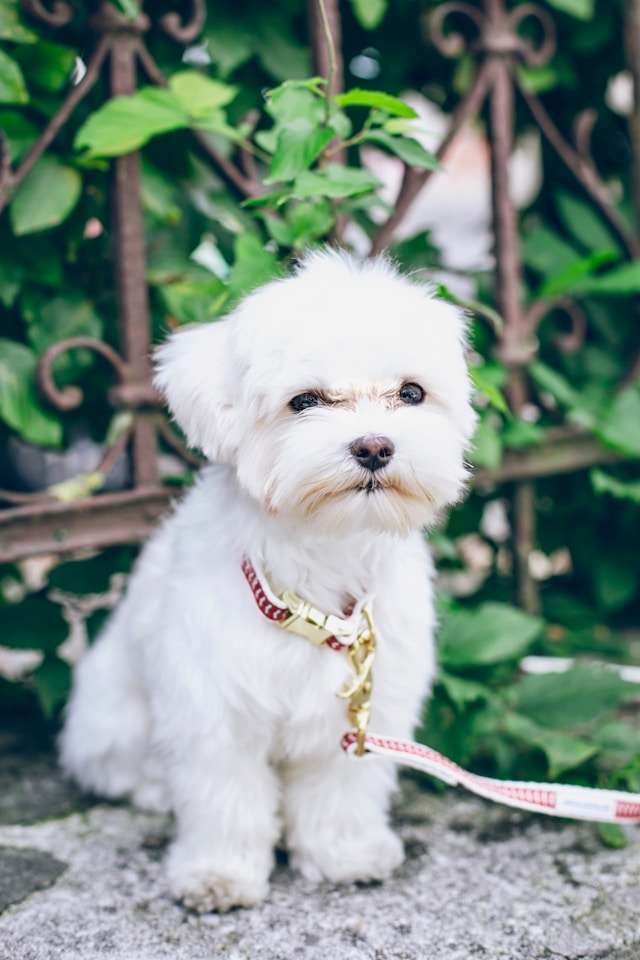
5 Essential Tips for Raising a Happy Maltese Dog My journey with different dog breeds spans many years, yet the Maltese dog remains closest to my heart.
With their rich history dating back thousands of years, these white-coated companions blend a lap dog’s charm with the spirit of a giant breed. Understanding the Maltese dog’s origin is crucial to appreciating their unique characteristics.
Where are Maltese dogs from, you ask? These elegant canines hail from the central Mediterranean area, specifically the island of Malta, which explains their name and some of their distinctive traits.
Life with a Maltese has taught me much about their unique needs and Maltese behavior. Their distinctive personality, marked by a lively temperament and affectionate nature, combined with a lifespan of 12-15 years, make them particular companions. Your furry friend needs proper understanding and care to stay happy and healthy, which includes addressing common Maltese behavior problems early on.
Let me share five tips to help you raise a thriving Maltese. We’ll discuss creating the right home environment, setting up daily routines, and mastering Maltese training techniques that benefit you and your pet.
Table of Contents
Creating the Perfect Home Environment
A perfect home environment for your Maltese starts with knowing what makes these little dogs tick. My years of Maltese ownership taught me that these elegant companions need a thoughtful living space, prioritizing their comfort and safety.
Setting up a comfortable living space
Your Maltese needs a proper den area to feel at home. A small bathroom with a baby gate or a pet playpen works excellently [1]. The space should have two zones: one clean area for their bed, food, and water, and another for their piddle pad. This setup helps them develop good housebreaking habits and supports their trainability.
These sensitive pups need careful temperature control. Multiple cozy spots around the house let them adjust their comfort level. They need a comfortable bed in a quiet corner since Maltese do well in small spaces but value their private retreat [2]. This is especially important for apartment living, where space might be limited.
Essential supplies and equipment
Your Maltese will need these essential items:
- A shallow ceramic bowl for food and water (deep bowls can be tricky for Maltese) [3]
- A right-sized crate for comfort [1]
- Comfortable bedding and baby blankets
- An exercise pen (35″ with 4-6 panels works best) [1]
- Pee pads for indoor training
Pro Tip: Keep Nutrical Puppy Paste handy, especially when your Maltese first comes home [1]. This can be helpful during the initial stages of Maltese puppy training.
Safety-proofing your home for a Maltese
Looking at your home from a Maltese’s viewpoint helps create a safer environment. Here’s what you need to do:
- Attach all electrical cords to baseboards or hide them [4]
- Keep toilet lids down to avoid contact with toxic bowl cleaners [4]
- Put up sturdy gates at stairways
- Lock away all medications, cleaning supplies, and poisonous materials [5]
Important Safety Note: Watch out for antifreeze – its smell attracts dogs and is very toxic [4].
Your houseplants need attention, too. Keep them out of reach since some can harm your Maltese. This matters even more during their puppy stage when they explore everything with their mouths [5].
Establishing a Consistent Daily Routine
A consistent daily routine helps your Maltese thrive and stay happy after you set up their perfect home environment. My years with these adorable companions have taught me that structure gives them security and helps them flourish. This routine is crucial for managing Maltese behavior and preventing excessive barking.
Balancing exercise and rest periods
Maltese dogs require specific exercise to stay healthy. My routine includes two daily walks—one in the morning and one in the evening—that last 20-30 minutes each [6]. Your Maltese should trot with an energetic gait at a comfortable, brisk pace during these walks. This Maltese walking routine keeps them physically fit and helps manage their energy levels, reducing the likelihood of hyperactivity.
My tested exercise guidelines work well:
- Keep walk times consistent each day
- Take breaks every 20 minutes during more extended activities
- Keep your dog hydrated, especially in warm weather
- Pick more excellent hours for outdoor activities
Meal scheduling and portion control
Adult Maltese do best with set meal times. They thrive on two meals daily – morning and evening [7]. Puppies between 12 weeks and 9 months need three meals daily [8]. Proper nutrition is crucial for addressing potential health issues in Maltese dogs.
Portion control is vital—adult Maltese need about 45 calories per pound of body weight daily while growing puppies require around 55 calories per pound [8]. Most Maltese weighing 2-4 pounds eat about 1/4 to 1/2 cup of food per day [8]. This careful attention to diet helps with weight management and prevents obesity-related health problems.
Incorporating playtime and training sessions
Short but regular training sessions work best for Maltese dog training. Each session should last 5-15 minutes to keep your Maltese focused and excited [9]. This prevents boredom and ensures they learn effectively. The intelligence of Maltese dogs makes them quite responsive to commands, but consistency is vital.
Interactive play throughout the day adds variety. Games like “Find It” make great indoor alternatives when outdoor exercise isn’t possible [6]. These activities provide physical exercise and mental stimulation, crucial for managing their lively temperament.
Pro Tip: Your Maltese’s schedule should stay the same on weekends. A consistent routine prevents anxiety and behavior problems [9].
Mastering Positive Training Techniques
Training a Maltese dog demands patience, consistency, and the right approach. My experience as a Maltese trainer has shown that positive reinforcement proves the quickest way to train these intelligent and sensitive companions [10]. Understanding how to train a Maltese puppy effectively can prevent many behavior issues.
Simple command training methods
Positive reinforcement training forms the foundation of my approach to Maltese training. This means adding something pleasant right after the desired behavior [11]. A dog that masters “sit” or “stay” gets clear, one-word instructions and immediate rewards for successful responses [12].
My Maltese dogs respond exceptionally well to clicker training. The clicker marks the exact moment your dog performs the desired behavior and helps them understand what earned the reward [13]. Training sessions work best when kept short – just 5-10 minutes at a time [14]. This approach capitalizes on the breed’s intelligence and trainability.
Addressing common behavioral challenges
Redirection rather than punishment effectively solves most behavioral issues. My approach guides Maltese dogs toward positive alternatives when they display unwanted behavior [12]. For example, a dog chewing furniture quickly learns to prefer an appropriate chew toy instead. This method is advantageous when dealing with Maltese behavior problems like excessive barking or separation anxiety.
“Leave it” and “drop it” commands rank among my top priorities since they can save your Maltese from picking up dangerous items [12]. Punishment-based training damages your dog’s bond with you and significantly slows its learning process [12]. Understanding how to discipline Maltese properly is crucial for maintaining a positive relationship with your pet.
Using rewards effectively
Careful timing and selection of rewards matter greatly. Here are the rewards that work best:
- High-value treats for new behaviors or challenging situations
- Verbal praise combined with physical rewards
- Favorite toys for successful training sessions
- Physical affection when appropriate
Pro Tip: The reward should match the task’s difficulty. A simple “sit” in your living room might earn a regular treat, while a successful recall away from other dogs deserves something special [15].
Note that positive reinforcement works only when the behavior increases frequency [11]. Dogs that show no improvement likely need adjustments in training execution rather than a method change [11]. Consistent positive training creates eager learners who genuinely enjoy their training sessions.
Building Strong Social Bonds
Your Maltese needs strong social bonds because of their profoundly social nature. My work with these affectionate companions has shown that Maltese dogs naturally thrive on human interaction and love playing with other dogs [16]. Their affectionate nature makes them excellent family pets, but managing their social needs properly is essential.
Family interaction guidelines
Daily positive interactions create strong family bonds. These dogs place great value on family connections, which aligns with their Mediterranean heritage [17]. Here’s how you can strengthen these bonds:
- Set aside particular one-on-one time with each family member
- Create consistent evening routines, especially around dinnertime
- Let your Maltese join appropriate family activities
- Keep interactions calm and positive
- Show affection while setting clear boundaries
Introducing new people and pets
Controlled introductions matter most when socializing your Maltese with new people and pets. My experience shows that Maltese puppies learn best from early socialization between eight to twelve weeks of age [18]. Socialization with people and pets is crucial for developing a well-rounded Maltese dog.
These steps lead to successful introductions:
- Pick a neutral, quiet spot for first meetings
- Make initial interactions brief and positive
- Let your Maltese set the pace when approaching newcomers
- Give rewards for calm, friendly behavior
- Watch their body language for stress signs
Pro Tip: Visitors who offer treats help create positive associations. They should toss treats gently toward your Maltese instead of forcing direct interaction [19].
Preventing separation anxiety
My work with Maltese dogs over the last several years shows they can develop separation anxiety [16]. Several early strategies help prevent this common issue. Unique toys or treats, when leaving, create positive associations with alone time [20]. Separation anxiety prevention is critical to raising a well-adjusted Maltese.
Low-key goodbyes work best. Your Maltese needs a few minutes without attention after you return home [20]. This approach helps stop anxiety-related behaviors before they start.
These strategies prevent anxiety effectively:
- Train with short separation periods
- Give them a “bye-bye” bone or special toy only during absences
- Play soft music or talk radio to keep the environment calm
- Be a strong, confident leader
- Give them enough exercise before leaving them alone [20]
Building social bonds takes time and patience. Consistent positive interactions and attention to your Maltese’s social needs will create a deep, rewarding relationship with your furry friend.
Maintaining Physical and Mental Health
A healthy Maltese dog needs the right mix of physical exercise and mental stimulation. My experience as a Maltese specialist shows these intelligent little dogs need body and mind activities to stay healthy. Proper Maltese maintenance involves attention to both physical and mental well-being.
Regular exercise routines
Small size doesn’t mean less exercise for Maltese dogs. They need two daily walks of 20-30 minutes each [6]. The pace should let your Maltese maintain an energetic trot without getting too tired. This regular exercise helps prevent obesity and supports overall health, reducing the risk of common health issues in Maltese dogs.
My guidelines for the best exercise results include:
- Morning and evening walks to release energy steadily [6]
- Indoor play sessions during lousy weather
- Gentle exercise for puppies under 8 months [21]
- Exercise on non-slippery surfaces to protect their patellas [22]
Mental stimulation activities
Mental exercise matters just as much as physical activity for Maltese dogs. My work shows that mental stimulation prevents destructive behaviors and keeps their minds sharp [23]. Here are activities that keep my Maltese involved:
Indoor Mental Workouts:
- Puzzle toys with hidden treats
- “Find it” games for scent work [24]
- Short training sessions (15-20 minutes) [23]
- Interactive toys that dispense treats
These activities not only keep your Maltese mentally sharp but also help manage their energy levels, reducing the likelihood of hyperactivity. Remember, are Maltese hyper is a common question, and the answer often lies in providing adequate mental stimulation.
Health monitoring tips
Regular health checks help catch problems early. Adult Maltese need yearly wellness exams, while seniors over 8 years should visit twice yearly [25]. Pay special attention to potential issues like patellar luxation, a common health concern in small breeds like the Maltese.
These health indicators need attention:
- Changes in appetite or thirst levels
- Energy levels during exercise
- Joint mobility, especially in knees and hips
- Breathing patterns during activity
- Post-exercise recovery time
Your Maltese needs breaks every 10 minutes during play sessions to avoid getting too tired [24]. Puppies need extra care with exercise intensity since their bones are still growing [21].
Your dog’s exercise needs change with age and health status. A vet consultation helps adjust exercise routines, especially if your dog shows signs of joint issues or breathing problems [22]. The right mix of monitoring and exercise helps Maltese dogs stay playful and vibrant into their senior years.
Developing Proper Grooming Habits
A beautiful white coat is the hallmark of a Maltese, and it needs proper grooming techniques and dedication to maintain. Years of working with these elegant dogs have led to a detailed grooming routine that keeps their coat healthy and stunning. Proper grooming is a crucial aspect of Maltese maintenance.
Daily grooming essentials
Your Maltese coat length determines how often you need to brush. Short puppy cuts need brushing every 3 days, while longer coats require daily attention [26]. A complete grooming kit should have the following:
- Pin brush for longer coats
- Bristle brush for shorter coats
- Quality detangling spray
- Facial wipes for tear stains
- Stainless steel comb for detailed work
Using a detangling spray before brushing prevents coat damage [26]. The best approach is to work through the coat section by section, with extra care around sensitive areas like the ears and belly.
Professional grooming schedule
Your chosen coat style dictates professional grooming needs. A puppy cut typically needs professional grooming every 6-8 weeks [27]. Show coats or longer styles might need visits every 3-4 weeks [27].
Regular bathing every 3-4 weeks helps between professional sessions [26]. Here’s a proven bathing process:
- Remove all tangles before wetting the coat
- Apply shampoo in a downward motion to prevent matting [28]
- Conditioning is vital for Maltese coats [28]
- Blot excess water with a towel (never rub) [26]
- Use a low-heat dryer while brushing to prevent tangles [29]
Dealing with everyday coat issues
Experience shows that coat changes present the biggest challenge, usually between 10 and 14 months of age [26]. As the coat becomes prone to matting, more frequent brushing becomes necessary.
Stubborn tangles require a strategic approach. Start by applying quality detangling product and working through the knot with your fingers [26]. If needed, a slicker brush can help “pat” out persistent knots [26].
Pro Tip: Tear stains need daily attention. Clean the face area 2-3 times daily, especially after meals [30]. Stubborn stains respond well to specialized tear stain removers with consistent application.
Ear care deserves special attention. Use appropriate cleaning solutions to check and clean the ears every 4 weeks [26]. This routine helps prevent infections and ensures your Maltese stays comfortable.
Grooming goes beyond looks – vital for your Maltese’s health and comfort. Consistent care and attention to detail will help maintain that signature white silky coat while ensuring overall well-being.
Conclusion
Your Maltese dog’s happiness depends on your dedication, knowledge, and consistent care in several key areas. I’ve learned through experience that success comes when you focus on everything – creating a safe home, keeping up with grooming needs, and understanding the unique Maltese behavior traits.
These elegant dogs do best with structured daily routines, positive training methods, and regular exercise. Because of their social nature, they need quality time with family members. Their distinctive coat needs special grooming attention. Understanding the origin and history of Maltese dogs can provide valuable insights into their care needs.
Each Maltese has its own personality and specific requirements. You should introduce these practices slowly and adjust them based on how your dog responds. The proper care and attention to these basics will help your Maltese become a well-adjusted, happy companion that brings joy to your family for years.
Remember, are Maltese easy to train? With patience and consistency, they certainly can be. Their intelligence and eagerness to please make them quite responsive to commands. However, starting training early and using positive reinforcement techniques is essential.
By following these guidelines and understanding the unique needs of your Maltese, you’ll be well on your way to raising a happy, healthy, and well-behaved companion. Whether you’re dealing with Maltese barking issues or wondering how to stop Maltese from barking, consistent training and proper socialization are essential. With the right approach, your Maltese will become an adaptable companion and a beloved family member.
FAQs
- How can I ensure my Maltese dog stays happy? To keep your Maltese happy, provide plenty of affection through petting and offer small treats throughout the day. Create a dedicated space for them, such as a comfortable bed or crate. Ensure they have regular outdoor time, at least three times daily. Offer praise frequently, using phrases like “good dog.” Maintain a consistent routine, including daily walks and playtime, to keep them physically and mentally stimulated.
- What are some essential care tips for Maltese owners? Primary care for Maltese includes daily brushing and regular professional grooming every 6-8 weeks to maintain their beautiful white silky coat. Please pay
- special attention to dental hygiene, brushing your teeth thrice weekly to prevent common dental issues. Establish a proper diet and exercise routine, with daily walks or playtime in a secure area. Regular health check-ups are crucial for monitoring their well-being and catching potential health issues early.
- What type of exercise is best for Maltese? Maltese dogs are energetic but don’t require extensive training. Daily walks, typically 20-30 minutes twice a day, are usually sufficient. They also enjoy playtime in a fenced yard or even indoors. For mental stimulation, incorporate puzzle toys and short training sessions. Monitor their energy levels and adjust exercise intensity accordingly, especially for puppies and seniors.
- What do Maltese dogs enjoy most in terms of companionship? Maltese dogs thrive on human companionship and closeness. They love being near their owners, whether sitting at your feet, being held, or cuddling in your lap. To prevent separation anxiety, which they can be prone to, consider crate training and gradually accustom them to short periods alone. Include plenty of positive interactions in appropriate family activities to strengthen your bond.
- How should I groom my Maltese to maintain their coat? Grooming a Maltese requires daily attention, especially for longer coats. Use a pin brush for longer coats or a bristle brush for shorter cuts. Apply a detangling spray before brushing to prevent damage. Use a gentle shampoo and conditioner for bathing every 3-4 weeks. Clean their face daily to manage tear stains, and check and clean their ears regularly. Professional grooming every 6-8 weeks helps maintain their coat in optimal condition.
References
[1] – https://belladolcemaltese.com/new-puppy-necessities/ [2] – https://iheartdogs.com/can-a-maltese-live-in-an-apartment/ [3] – https://www.spoiledmaltese.com/threads/must-haves-and-nice-to-haves-for-new-puppy.181058/ [4] – https://www.malteseonly.com/pupproof.html [5] – https://www.petmd.com/dog/general-health/how-to-puppy-proof-your-house [6] – https://www.petmaltese.com/maltese-exercise [7] – https://www.hypropremium.com.au/maltese-feeding-guide/ [8] – https://www.petmaltese.com/maltese-feeding-guidelines [9] – https://www.dogster.com/dog-training/how-to-train-a-maltese [10] – https://www.akc.org/expert-advice/training/operant-conditioning-positive-reinforcement-dog-training/ [11] – https://www.petmd.com/dog/behavior/how-to-train-a-dog-with-positive-reinforcement [12] – https://iheartdogs.com/12-secrets-for-teaching-a-maltese-puppy-obedience/ [13] – https://www.spoiledmaltese.com/threads/need-tips-for-obedience-tricks-training.252442/ [14] – https://www.akc.org/expert-advice/training/teach-your-puppy-these-5-basic-commands/ [15] – https://pawsandreward.com/dog-training-rewards-a-guide-beyond-treats/ [16] – https://www.myfamilyvets.co.uk/maltese-breed-guide [17] – https://culturalatlas.sbs.com.au/maltese-culture/maltese-culture-family [18] – https://iheartdogs.com/how-to-socialize-a-maltese-puppy-wrong-right-ways/ [19] – https://www.animalhumanesociety.org/resource/introducing-your-dog-your-significant-other-or-anyone-new [20] – https://www.malteseonly.com/anxiety.html [21] – https://www.malteseonly.com/exercise.html [22] – https://blog.myollie.com/maltese-health/ [23] – https://www.earthbuddypet.com/eb-blog/mental-stimulation-for-dogs-ideas/ [24] – https://wagwalking.com/activity/activities-for-malteses [25] – https://www.petmaltese.com/maltese-care-tips [26] – https://allgroom.co.nz/blogs/breed-guides/ultimate-maltese-clippers-grooming-guide?srsltid=AfmBOopgVinSajvO5CmN_DjFlF1pecWBzjAt1thNUIysfmhsvvxglHK4 [27] – https://www.spoiledmaltese.com/threads/how-often-is-professional-grooming-needed.233866/ [28] – https://espree.com/BreedProfiler/maltese-grooming-bathing-and-care [29] – https://www.wikihow.com/Groom-Maltese-Dogs [30] – https://www.petmaltese.com/maltese-grooming

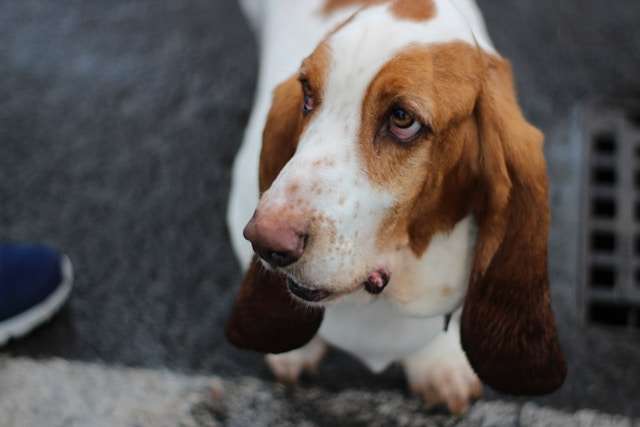
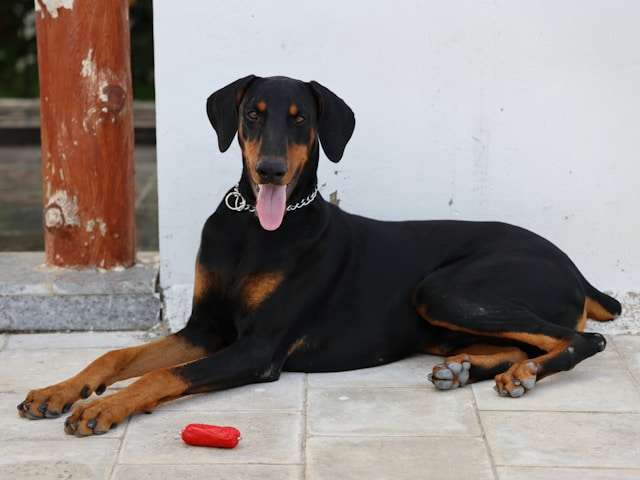
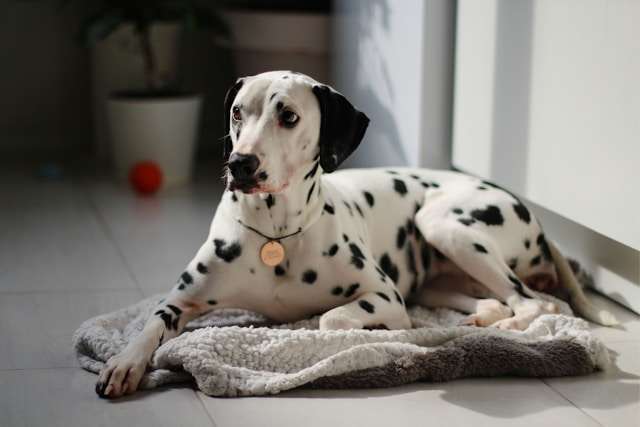


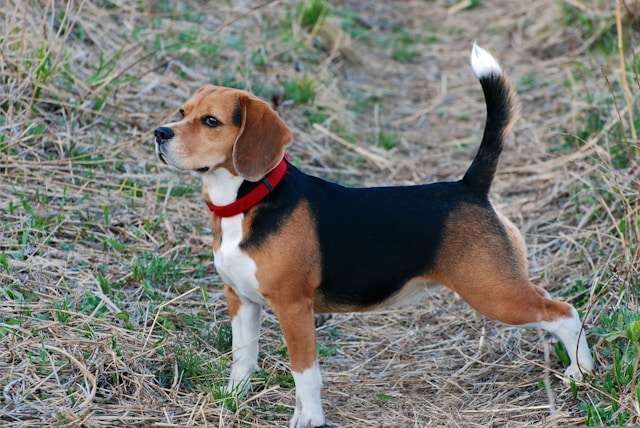
This website, you can access lots of online slots from famous studios.
Visitors can enjoy traditional machines as well as new-generation slots with vivid animation and exciting features.
Whether you’re a beginner or a seasoned gamer, there’s a game that fits your style.
slots
Each title are ready to play anytime and optimized for laptops and tablets alike.
All games run in your browser, so you can start playing instantly.
Site navigation is user-friendly, making it convenient to find your favorite slot.
Sign up today, and dive into the excitement of spinning reels!